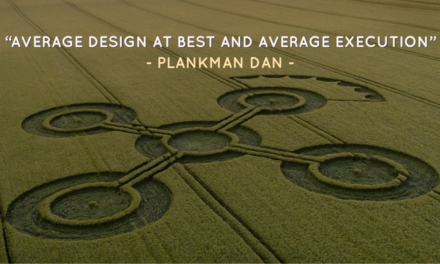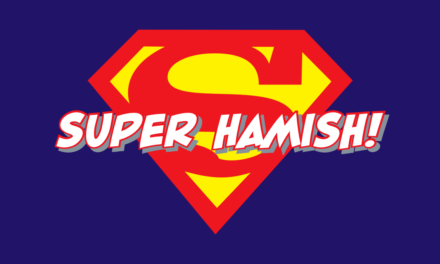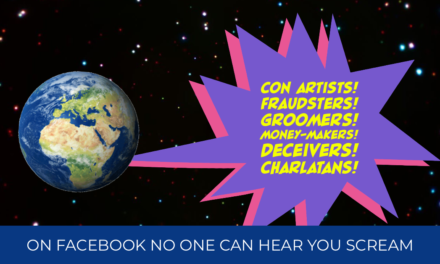
Croppie Gossip: We’re Not Sure Who You Are Speaking For

One of the things we dislike about certain other croppies is the way they talk as if they are speaking for all circle makers. We’ve heard the likes of Matthew Williams, Andrew Pyrka, Dan Davies and Dene Hine do exactly the same, but ultimately they speak for nobody but themselves. There is nothing positive to say about any of them when it comes to crop circles, but at least all four of them have been active in the fields at one point or another.
Not so Sue Jones, a woman who says she lived in Alton Barnes during 2009 and 2010 and claims to know just how all circle makers feel. She recently left a quite astonishing comment in the Crop Circles UK group that is well worth addressing:

The circle makers became involved in an industry built around them.
This is true to a certain extent, but it is a poor defence of circle makers by anyone who portrays them as oppressed individuals mercilessly exploited by capitalists.
From the mid-1980s various national newspapers would readily discuss the crop circle phenomenon during the summer months. The circles became another item that could potentially be exploited to shift a few extra copies. It really was to be expected as if something exists, somebody, somewhere, will commodify it. Reports from 1990 make it clear that farmer Tim Carson was selling crop circle t-shirts not too long after the legendary East Field pictogram appeared. But why shouldn’t he? A crop circle appeared, authorless, in the field he worked. That formation had no owner. Its form could be reproduced, licence free, by anyone who wanted to. So, the likes of cerealogists Colin Andrews, Pat Delgado and circle maker Jim Schnabel were perfectly free to write on the subject and see their books released by major publishers Bloomsbury and Penguin. Others have followed suit, alongside the merchandisers. Furthermore, there have been the guest houses, hotels, pubs, cafes and shops that have all been able to supply services to croppies visiting the crop circle heartlands. Right place, right time.
At no point has anyone prevented crop circle makers from participating in any of the above opportunities. Likewise, circle makers were and still are free to exploit their skills in the field by seeking out and accepting commissioned work.
Against this backdrop, no circle maker from 1990 onwards can claim to have been unaware of the business opportunities that had developed around the crop circles. They knew what they were getting into. They knew what to expect.
People were and still are making a lot of money from it.
Perhaps people once did make a bit of money from crop circles, but it is no longer the case. There is only pocket money to be made in terms of profit.
Sue Jones seems to be basing her argument around the word of two circle makers who are no longer active: Terry Roderick, who hasn’t been seen on the circle scene for the best part of a decade (which shows how up to date that information is); and her friend Dene Hine who still screeches about anyone who makes money from crop circles — except when he’s the one pocketing the cash.
We’ve previously explored in greater detail just why people are no longer making a lot of money from crop circles. You can read that here.
The artists feel they’ve been used and it’s time people knew the truth. They don’t like the fact that people are being conned.
We really have no idea which circle makers Sue is speaking for here. We will go further and say she isn’t speaking for anyone currently active in the fields. It’s 2023, not 2010.
We are familiar with the overwhelming majority of active circle makers and we know their views on this matter: none of them feel they have been used by any third parties for financial gain. All of them knew the scene they were getting involved with. Some of them used to — and still do — read the books and buy the merchandise. Their approach is simple: they make a crop circle, leave the field and acknowledge that anyone is free to do what they will that work, its design and image.
Admittedly, some crop circle makers will admit to having felt pressured by certain photographers at one point or another, but that should be tempered by an understanding that by far the biggest culprit was someone no longer on the scene. Someone wrongly portrayed as being onside with circle makers because he was once in their ranks.
And do any of today’s covert circle makers feel that anyone is being conned? Circle makers, we repeat, make a crop circle, leave the field and acknowledge that anyone is free to do what they will with that work, its design and image. Once that circle has been left behind it is out of the makers’ hands. If circle makers feel anyone is being conned — if they truly believe that the realities of what goes on in the fields haven’t been endlessly discussed in countless printed articles, television features and radio interviews since 1991; if they truly believe that croppies are incapable of doing their own research — then they are at liberty to walk away and remove their product. Nobody is holding a gun to their heads.





